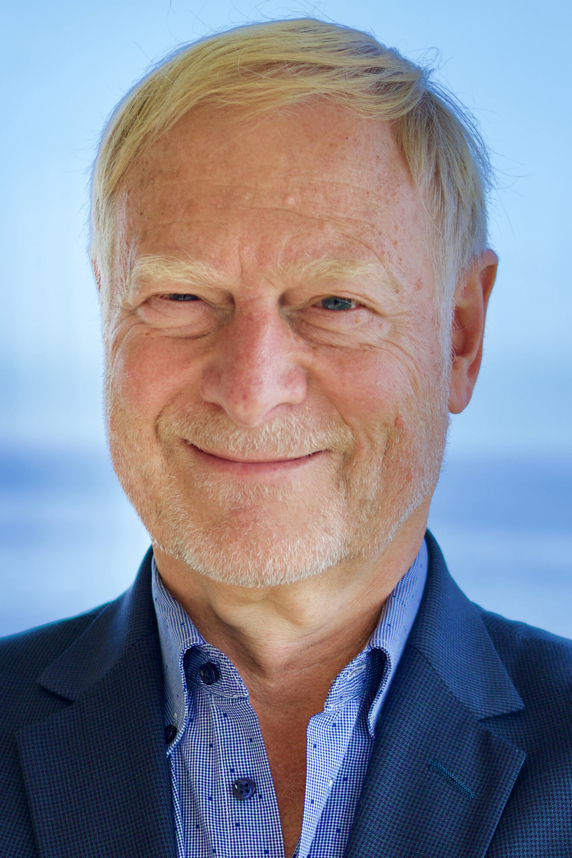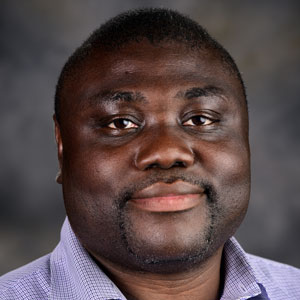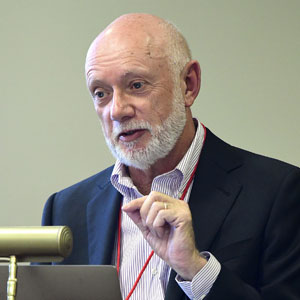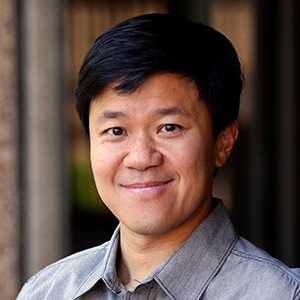On April 13, renowned scientist Richard Young, Ph.D., from the Massachusetts Institute of Technology (MIT), presented “Nuclear Condensates in Gene Regulation and Disease” as part of the NIEHS Distinguished Lecture Series. He is a professor of biology at MIT and a member of the Whitehead Institute for Biomedical Research in Cambridge, Massachusetts.
Why nuclear condensates matter
 “The traditional view of cell biology is that cellular functions occur within membrane-bound compartments such as the nucleus, where the genome is located and gene regulation takes place,” states Young’s Whitehead Institute profile. “Young and his lab have shown that gene regulation actually occurs within biomolecular condensates — tiny, non-membrane-bound organelles where the machinery that transcribes genes is compartmentalized and concentrated. They recently discovered that these condensate compartments play an important role in drug action in cancer. These findings are changing our understanding of gene regulation in healthy and disease cells and leading to new therapeutic concepts for disease treatment.” (Photo courtesy of Richard Young)
“The traditional view of cell biology is that cellular functions occur within membrane-bound compartments such as the nucleus, where the genome is located and gene regulation takes place,” states Young’s Whitehead Institute profile. “Young and his lab have shown that gene regulation actually occurs within biomolecular condensates — tiny, non-membrane-bound organelles where the machinery that transcribes genes is compartmentalized and concentrated. They recently discovered that these condensate compartments play an important role in drug action in cancer. These findings are changing our understanding of gene regulation in healthy and disease cells and leading to new therapeutic concepts for disease treatment.” (Photo courtesy of Richard Young)According to Young, in recent years, scientists have found that an increasingly important aspect of the cell involves biomolecular compartments without membranes, which researchers call condensates. Such condensates play a role in many cellular processes, ranging from DNA damage repair and immune signaling to cell division and gene regulation.
“Gene regulation is the process used to control the timing, location, and amount in which genes are expressed,” according to the National Human Genome Research Institute. “The process can be complicated and is carried out by a variety of mechanisms, including through regulatory proteins and chemical modification of DNA. Gene regulation is key to the ability of an organism to respond to environmental changes.”
Young’s team hypothesizes that disruption of nuclear condensates, whether due to genetic or perhaps environmental factors, may play a role in diseases such as cancer and type 2 diabetes. Recently, his group created a catalog of nearly 36,000 mutations that they think likely contribute to dysregulation of condensates.
“So far, we’ve been able to validate a small portion of that catalog,” said Young, describing ongoing work. He said that going forward, the catalog will provide a strong foundation for novel research into disease and therapeutics.
Environmental influences
Young told attendees that nuclear condensates appear to be highly sensitive to the environment, although much more research is needed to determine how various agents may affect their function and influence human health.
Francesco DeMayo, Ph.D., chief of the NIEHS Reproductive and Developmental Biology Laboratory, hosted Young’s talk. Among his other research, DeMayo studies how transcription factors, which are proteins that help to turn certain genes on or off, affect reproduction.
According to DeMayo, in researching reproduction, many scientists look to chemical compounds that interfere with the body’s endocrine system, known as endocrine disruptors. He noted that Young’s research raises a novel question.
“Maybe some of these [environmental] factors live in the condensates — that’s an area that is prime for research,” DeMayo said. “In other words, is there a class of pollutants that doesn’t interact directly with transcription factor proteins but lives in condensates and causes disease?”
Distinguished scientist
Young is a professor of biology at MIT and a member of the Whitehead Institute for Biomedical Research. He is a member of both the National Academy of Sciences and the National Academy of Medicine, and in 2006, he was recognized by the magazine Scientific American as one of the top 50 leaders in science, technology, and business. In 2013, he founded Syros Pharmaceuticals and continues as director of the company.
To learn more about Young’s research, visit his lab’s website.
Citations:
Sabari BR, Dall'Agnese A, Young RA. 2020. Biomolecular condensates in the nucleus. Trends Biochem Sci 45(11):961–977.
Boija A, Klein IA, Young RA. 2021. Biomolecular condensates and cancer. Cancer Cell 39(2):174–192.
(Catherine Arnold is a contract writer for the NIEHS Office of Communications and Public Liaison.)









